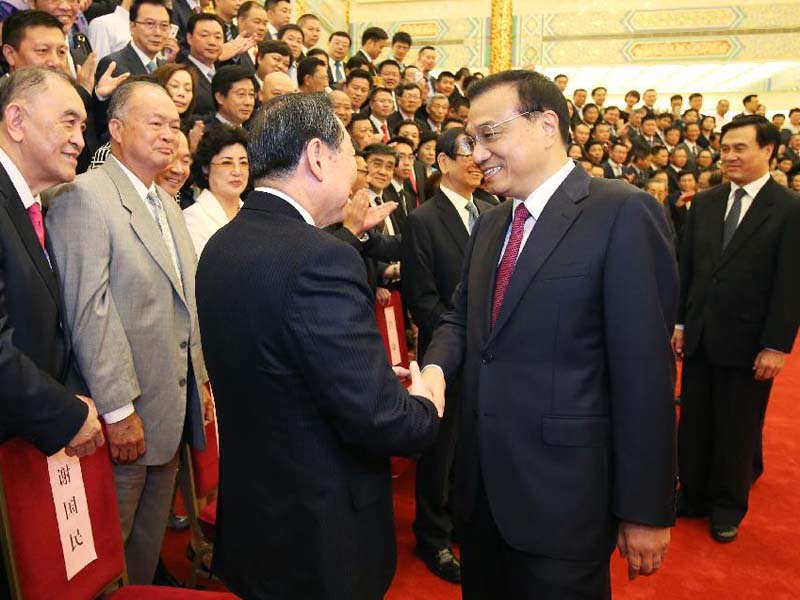What does the Free Trade Agreement mean for Australia’s technology industries? And what does it mean for our longer term relationship with China?
The agreement (officially known as ‘ChAFTA’) ranges far and wide, but there is little specific mention of technology, and less of information and communications technology. In fact, ICT is mentioned only in its application in order to streamline customs systems.
The only other time the word ‘technology’ is even mentioned in the agreement is in the context of using the intellectual property aspects of the treaty in such a way as to facilitate the transfer of IP.

Here’s a little game. Download the full text of the agreement here. Now use ‘Search’ to look up your favourite words and phrases.
• technology — 5 results
• information technology — 3 results
• intellectual property — 39 results
• services — 163 results
• tariff — 46 results
• legal — 28 results
• iron, coal, gold — 0 results
• corruption — 0 results
The biggest effect that ChAFTA will have on local ICT will be to make Chinese electronic products even cheaper and even more prevalent in Australia than they are now. DFAT’s website explaining the agreement lists telecommunications equipment as the second largest import category from China into Australia, at $4.9 billion, and computers as the third biggest, at $4.8 billion.
The two together comprise nearly 20 per cent of all of our imports from China – a very high proportion. It is Huawei routers, ZTE mobiles (that company makes all of Telstra’s home brand phones), Lenovo PCs, and all manner of cheap Android tablets. Apple’s iPhones are also made in China, and arrive in Australia directly from there (with a fair bit of black art financial skulduggery applied to the transaction on the way).
Australian technology exports to China, by contrast, are a blip. They are less than a rounding error in the overall trade relationship between the two countries.
We have a two-to-one trading advantage overall, thanks mainly to our iron ore, which comprises just over half our total exports of $107 billion annually. Coal is second, at about $9 billion, closely followed by gold.
Electronic gear, from any country, is not currently subject to any import duties in Australia, so ChAFTA will not reduce their prices as such. But by – presumably – increasing the overall trade between the two countries there will likely be a flow-on effect.
China is already Australia’s largest export market overall, and accounts for just under one quarter of Australia’s total foreign trade – imports and exports combined. That figure has been rising for years, since China started opening up in the 1980s, and is likely to continue to rise.
The agreement is likely to improve Australia’s exports of IT services to China – the one area of information technology where we have a trade surplus. Australian IT project managers and vendor support staff are pretty common in South East Asia, but not so common in China. That has largely been because of the language barrier, but ChAFTA is likely also to open more opportunity for Australia in that area.
The signing of ChAFTA came almost simultaneously with the release of the latest annual Lowy Institute poll, which has been a reliable barometer of Australians’ attitudes on a range of foreign policy issues, with sufficient data now to track changes over time.
“In 2015, Australians continue to hold a mixed, perhaps even contradictory, set of views on China,” says the survey.
When asked whether China is ‘more of an economic partner to Australia or more of a military threat to Australia’, more than three quarters (77 per cent) of Australians say they see China as more of an economic partner’. Only 15 per cent see it as ‘more of a military threat’.
Despite China’s sabre rattling in the South China Sea, fears that China poses a military threat have eased this year, with 39 per cent of the population believing it likely that ‘China will become a military threat to Australia in the next 20 year, compared to 48 per cent last year.
Feelings in general towards China remain steady at a warmish 58 degrees on the Lowy Institute’s ‘Feelings Thermometer’. A majority (61 per cent) of Australians believe that ‘China’s aim is to dominate Asia’, but even more (67 per cent) agree with the more benign view that ‘China’s aim is to create a better life for the Chinese people’.
Three quarters (73 per cent) agree that ‘Australia should develop closer relations with China as it grows in influence’, and a majority (52 per cent) now disagree with the view that ‘Australia should join with other countries to limit China’s influence’, which was not the majority view in previous Lowy surveys.
So ChAFTA comes at a time when Australians’ views of China are more positive than they have ever been. Increased trade is widely regarded as an antidote to military conflict.
An influential book published six years before the start of the First World War, Norman Angell’s ‘The Great Illusion’, said there would be no war because the world’s economies were two closely intertwined. We all know what happened.
We have also seen what has happened in more recent times, as warmongering politicians around the world abuse their citizen’s natural instincts for patriotism to further their own political aims at the expense of the nation’s economic well-being.
It is hard to criticise the China Australia Free Trade Agreement. Trade is a good thing. But it is not enough, and the goodwill of citizens in both countries is not enough, to prevent military conflict.
Do you know more? Contact James Riley via Email.

